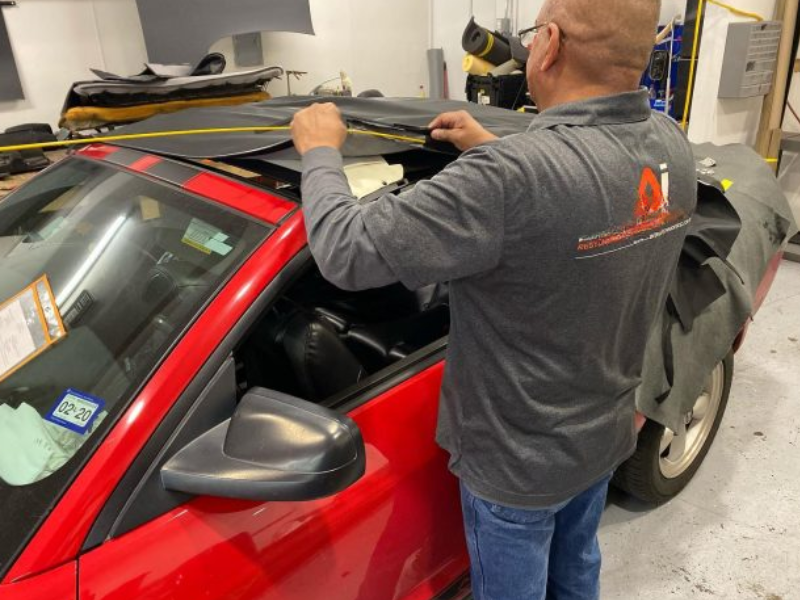Last Updated on October 6, 2023 by Matthew Lloyd
Car sputters after using fuel injector cleaner due to residual cleaner, dislodged deposits blocking fuel flow, fuel system contamination, or potential issues with damaged or worn-out fuel injectors. To resolve this, follow proper cleaner usage, opt for reputable brands, and consider professional maintenance for a smoothly running engine.
Understanding Fuel Injector Cleaners

Fuel injector cleaners are powerful solutions formulated to break down carbon deposits, varnish, and debris in the fuel injectors and other fuel system components. While they can improve fuel efficiency and engine performance, their potent nature can sometimes lead to temporary disruptions in fuel delivery, causing the engine to sputter or hesitate.
Possible Causes of Car Sputtering

Residual Cleaner in the Fuel System
- Excessive or improperly mixed cleaners can leave behind residues in the fuel system, leading to blockages or restrictions in the fuel lines.
- Follow the manufacturer’s instructions carefully, using the right amount of cleaner and thoroughly mixing it with fuel before adding it to your tank.
Dislodged Deposits
- Dislodged deposits can accumulate in fuel lines or filters, partially or completely obstructing fuel flow, resulting in poor engine performance.
- Add the cleaner to a full gas tank to dilute its potency and minimize excessive deposit dislodgement. Regular maintenance and professional cleaning can also prevent severe deposit buildup.
Fuel System Contamination
- Low-quality or incompatible fuel injector cleaners may cause more harm than good by dislodging deposits and clogging injectors or other components.
- Use a reputable cleaner that meets your car’s requirements to avoid adverse effects on engine performance.
Damaged or Worn-out Fuel Injectors
- Sputtering after adding the cleaner could indicate existing issues with the fuel injectors.
- Consult a professional mechanic to assess the condition of the injectors. Thorough cleaning or replacement may be necessary to resolve the problem.
Troubleshooting steps:

Step 1: Check for Fuel System Contamination
- Inspect the fuel filter, pump, and injectors for signs of contamination.
- Remove any dirt or debris that may be obstructing proper fuel flow.
- Consider replacing the fuel filter if it’s clogged or excessively dirty.
Step 2: Fill Up with Fresh Fuel
- After using the fuel injector cleaner, fill your tank with fresh gasoline to dilute any remaining residues and contaminants.
- This ensures your engine receives clean fuel for optimal combustion and helps clear any remaining debris.
Step 3: Drive Your Car
- Take your car for a spin and observe its performance during various driving conditions, such as city driving and highway cruising.
- Pay attention to acceleration, idling, and overall engine smoothness.
Step 4: Monitor and Evaluate
- Continue monitoring your car’s performance over the next few days and weeks.
- Note any changes or improvements in engine behavior.
- If the sputtering continues for an extended period or becomes more pronounced, it may indicate a more serious underlying issue that requires expert attention.
Expert Tips for Preventing Sputtering After Using Fuel Injector Cleaner:

- Follow Instructions Carefully: Always read and follow the instructions on the fuel injector cleaner bottle to ensure proper usage and prevent potential side effects.
- Use Reputable Brands: Stick to trusted and well-established fuel injector cleaner brands known for their effectiveness and safety.
- Choose the Right Cleaner: Select a cleaner that matches your car’s specifications and fuel system requirements. If unsure, consult your car’s manual or seek advice from a knowledgeable mechanic.
- Avoid Excessive Use: Overusing fuel injector cleaners can lead to unnecessary residue buildup or adverse effects. Stick to the recommended usage frequency and dosage.
- Regular Maintenance: Conduct routine maintenance, including changing the fuel filter and inspecting the fuel system, to prevent excessive buildup of deposits.
- Seek Professional Help: If you experience persistent sputtering or other engine-related issues, don’t hesitate to consult a qualified mechanic for proper diagnosis and repair.
- Clean Fueling Habits: Use high-quality fuel and avoid purchasing gasoline from unreliable or questionable sources to prevent fuel system contamination.
Summary:
Sputtering after using a fuel injector cleaner is a common issue, but it’s usually a temporary side effect of the cleaning process. Following the troubleshooting steps and expert tips in this article, you can effectively address the sputtering and maintain your car’s engine in peak condition.
FAQs (Frequently Asked Questions)
Can I use fuel injector cleaner regularly to prevent issues?
Yes, regular use of fuel injector cleaner can help maintain a clean fuel system, preventing major issues.
Is it okay to use any fuel injector cleaner I find?
No, using reputable brands compatible with your car’s specifications is crucial to avoid damage and contamination.
How often should I clean my fuel injectors?
Consider cleaning them every 15,000 to 30,000 miles or as your car’s manufacturer recommends.
Can sputtering indicate other engine problems?
Yes, sputtering might be a symptom of various engine issues, so seeking professional advice is essential if it persists.
Can I DIY clean my fuel injectors?
While DIY cleaning kits exist, professional cleaning is often more effective and thorough.
Key Notes:
- Sputtering after using fuel injector cleaner is common but temporary.
- Possible causes: Residual cleaner, dislodged deposits, fuel system contamination, or damaged injectors.
- Troubleshooting steps: Check cleaner instructions, use reputable brands, inspect the fuel system, fill up with fresh fuel, and monitor performance.
- Preventive tips: Follow instructions, choose the right cleaner, avoid excessive use, conduct regular maintenance, seek professional help, and practice clean fueling habits.

